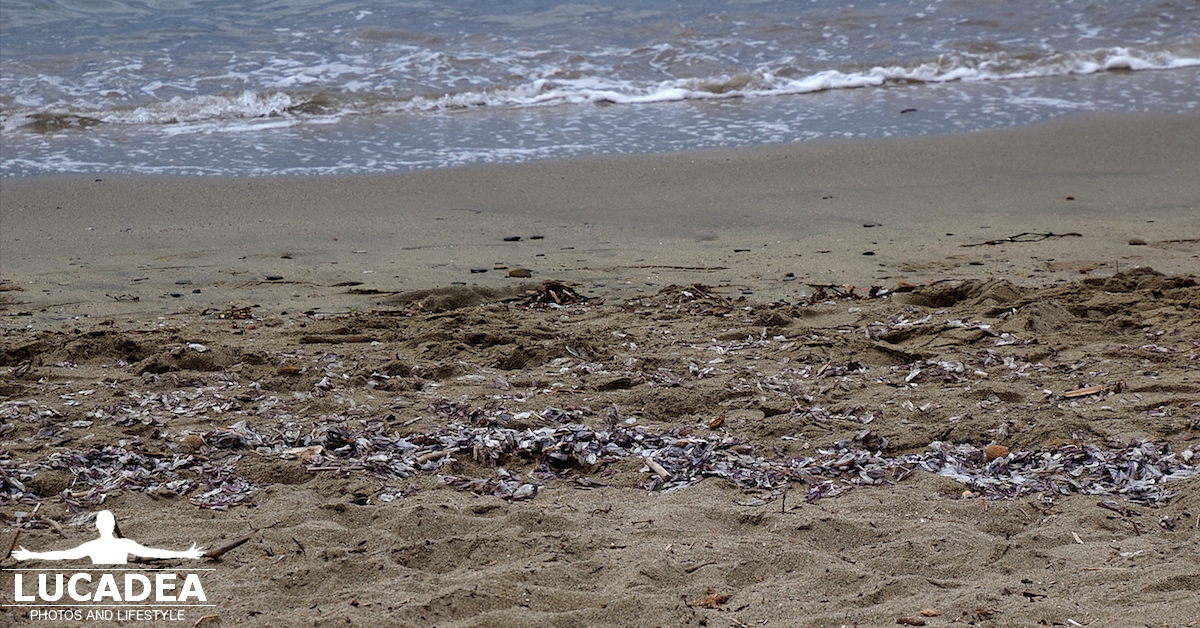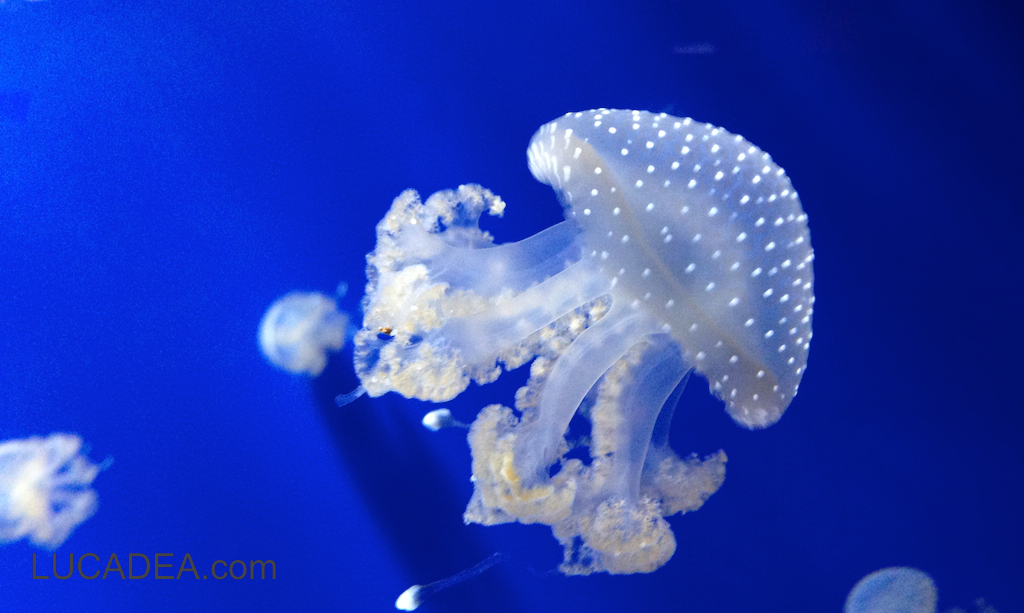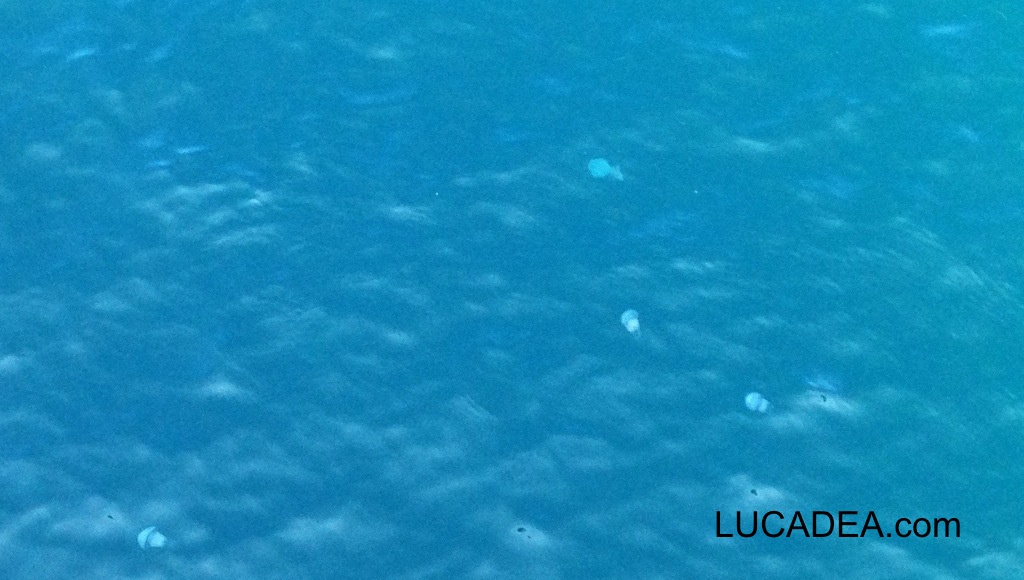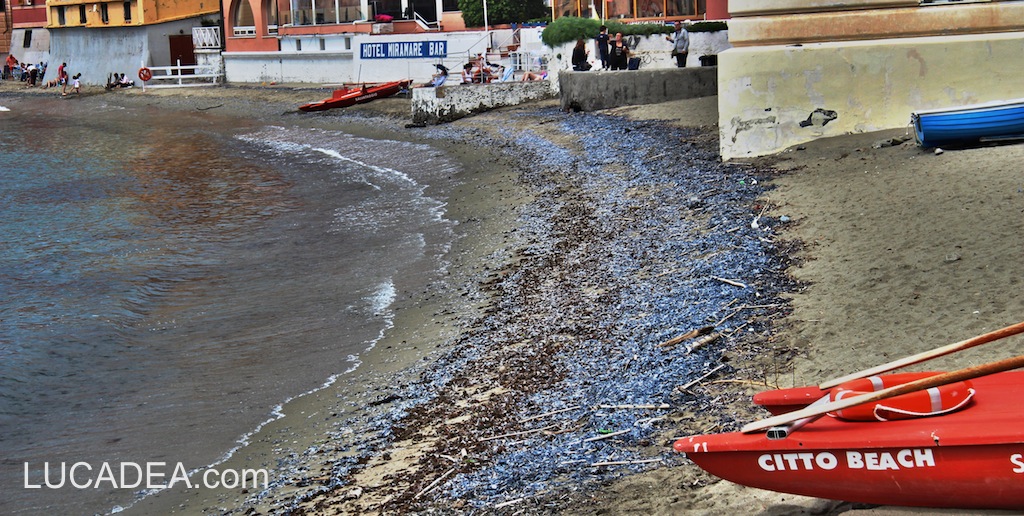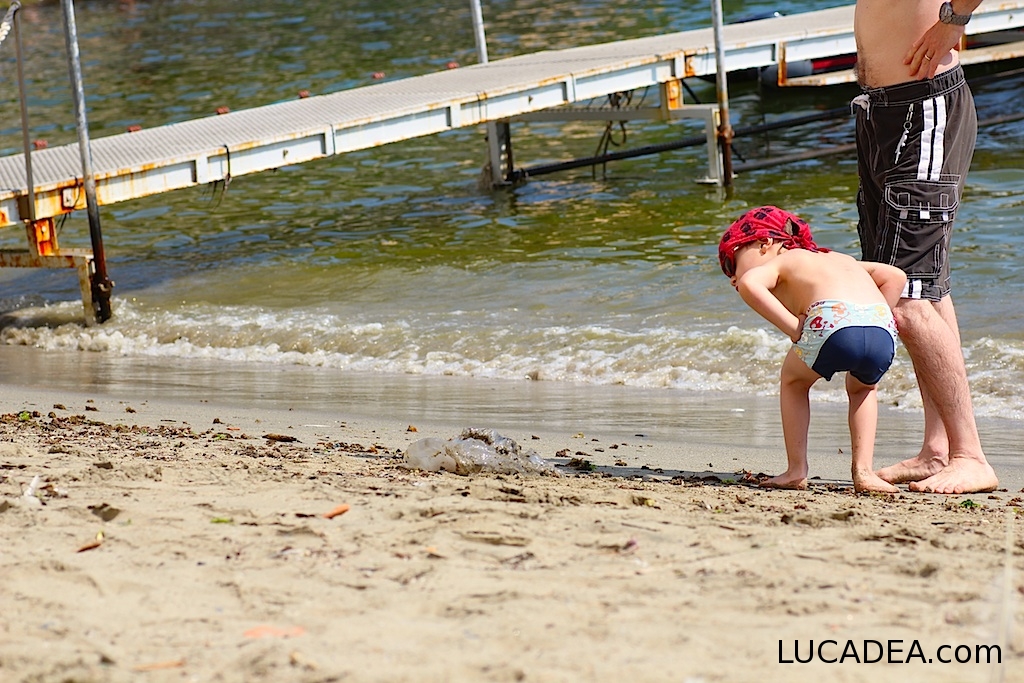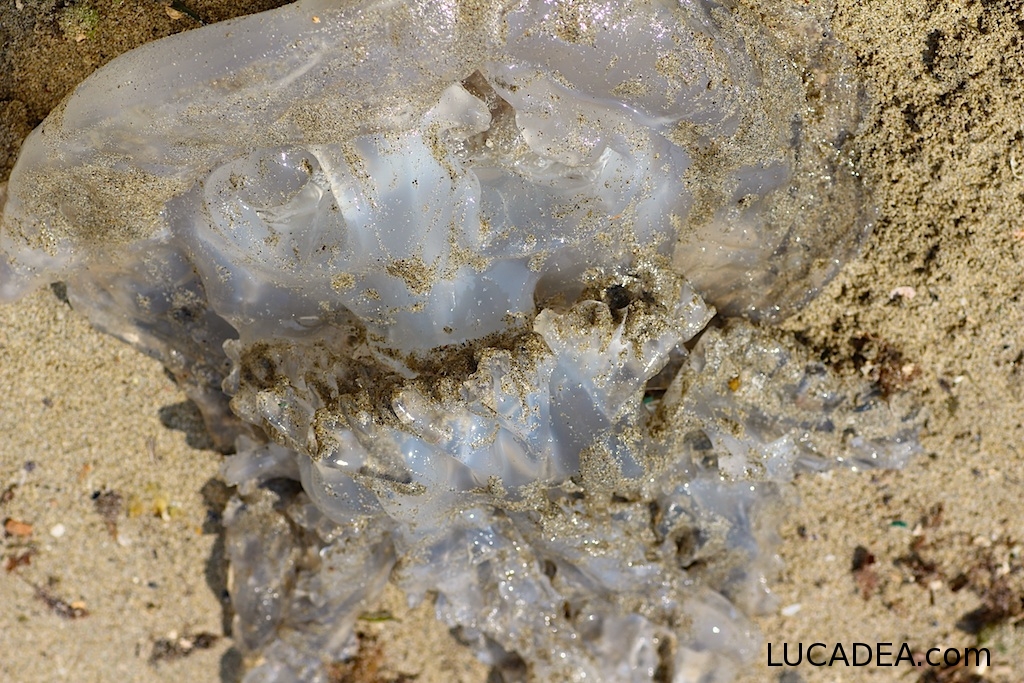Velelle in Baia del Silenzio on May 16, 2018.
The velelle (or velette or barchette di San Pietro) are dissolving along the beach of Baia del Silenzio and, as anyone who has seen them knows, they are not doing so by leaving a nice smell.
Thanks to the small storm that is lashing the Riviera these days, they are there beached on the shoreline… Luckily when the sun returns they will already be gone.
For now, the photo.
Have you ever seen these beached animals?
Add your own comment or go to the bottom of the site to read what other visitors have written.
Photo taken with Canon 600D and lens Tamron 16-300.
Here's where the bay is located:
Velella velella, also known as St. Peter's or St. John's boat, is a colony of hydrozoans of the Porpitidae family. It is often found in all oceans, on the shores or at most 1-2 cm deep in the water, with a preference for warm or temperate waters. Like other cnidarians (coelenterates), Velella velella is a carnivorous animal. It captures its prey, usually plankton, using its tentacles that contain toxins. These toxins, while effective against the prey, are harmless to humans, as they cannot penetrate the skin and do not cause any reaction to human skin. However, it is preferable to avoid touching your eyes after picking up a Velella velella.
Continue on Wikipedia

